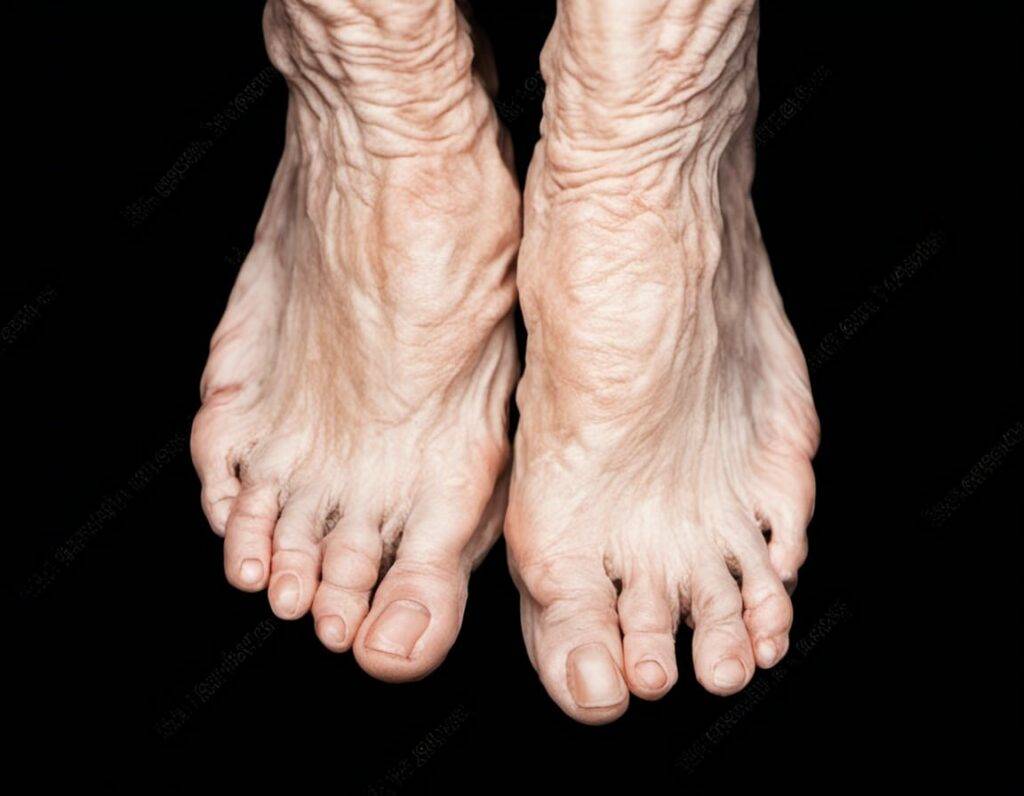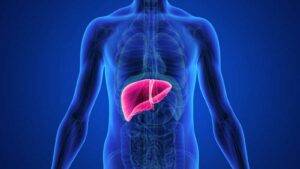Are you looking for comprehensive answers to your most pressing questions about arthritis? Look no further! In this post, we have gathered the top 30 questions that experts are frequently asked about arthritis and provided detailed, authoritative answers. Whether you’re seeking information about symptoms, treatment options, or lifestyle adjustments, this article contains all the information you need to understand and manage arthritis effectively. Read on to discover the answers to your burning questions and take control of your arthritis journey.
Comprehensive Arthritis Knowledge: Top30 Questions Answered by Experts
1. What is arthritis and what are its primary symptoms?
The definition of arthritis is the inflammation of one or more joints, resulting in pain, stiffness, and swelling. The primary symptoms associated with arthritis include joint pain, tenderness, stiffness, limited range of motion, and swelling around the affected joint.
2. What are the different types of arthritis and how do they differ in terms of symptoms and causes?
There are several types of arthritis, each with distinct symptoms and causes.
– Osteoarthritis is the most common type and is caused by the wear and tear of cartilage in joints. Symptoms include joint pain, stiffness, and limited mobility, most commonly affecting weight-bearing joints such as the knees, hips, and spine.
– Rheumatoid arthritis is an autoimmune disease where the immune system mistakenly attacks the joints, leading to joint inflammation and damage. Symptoms include joint pain, swelling, stiffness, fatigue, and systemic symptoms like fever or weight loss.
– Psoriatic arthritis is a type of arthritis that occurs in individuals with psoriasis, an autoimmune skin condition. Symptoms include joint pain, stiffness, swelling, and skin lesions.
– Gout is a type of arthritis caused by the buildup of uric acid crystals in the joints, leading to severe pain, redness, swelling, and tenderness, particularly in the big toe.
3. How is arthritis diagnosed and what are the key factors in a clinical evaluation?
Arthritis is diagnosed through a combination of medical history, physical examination, laboratory tests, and imaging studies. During a clinical evaluation, doctors consider several key factors, including the patient’s symptoms, the pattern and duration of joint involvement, family history, presence of systemic symptoms, and results of blood tests and imaging, such as X-rays or MRI scans.
4. What are the most effective treatment options for arthritis, both non-pharmacological and pharmacological?
The treatment options for arthritis can vary depending on the type and severity of the condition. Non-pharmacological approaches include:
– Physical therapy: Exercises and therapeutic modalities to strengthen muscles, improve joint mobility, and reduce pain.
– Occupational therapy: Techniques to adapt daily activities and promote independence.
– Heat and cold therapy: Applying heat or cold packs to the affected joints can help alleviate pain and reduce inflammation.
– Assistive devices: The use of braces, canes, or splints can provide support and reduce joint stress.
Pharmacological interventions may include:
– Analgesics: Over-the-counter pain relievers like acetaminophen or prescription nonsteroidal anti-inflammatory drugs (NSAIDs) to reduce pain and inflammation.
– Disease-modifying antirheumatic drugs (DMARDs): Medications that suppress the immune system and slow down the progression of rheumatoid arthritis or other autoimmune types.
– Corticosteroids: Oral or injectable medications that provide powerful anti-inflammatory effects but may have long-term side effects.
– Biologic agents: Targeted therapies that inhibit specific molecules involved in the immune response and are used for certain types of autoimmune arthritis.
5. Can arthritis be prevented or its progression slowed down? What preventive measures are recommended?
While arthritis cannot be entirely prevented or cured, there are preventive measures that can help slow down its progression and manage symptoms:
– Maintain a healthy weight: Excess weight puts additional stress on the joints and can exacerbate arthritis symptoms. By maintaining a healthy weight, individuals can reduce joint strain.
– Regular exercise: Low-impact exercises like walking, swimming, or cycling can help keep joints flexible, strengthen muscles, and improve overall joint function.
– Protect the joints: Avoiding repetitive motions and using joint protection techniques, such as braces or assistive devices, can help reduce the risk of joint damage.
– Balanced diet: Consuming a balanced diet that includes foods rich in omega-3 fatty acids (fish, flaxseeds) and antioxidants (fruits, vegetables) may have anti-inflammatory effects.
6. Are there any specific risk factors or predisposing conditions that increase the likelihood of developing arthritis?
Yes, there are specific risk factors and predisposing conditions that increase the likelihood of developing arthritis. These include:
– Age: The risk of developing most types of arthritis increases with age.
– Gender: Certain types of arthritis, such as rheumatoid arthritis, are more common in women.
– Genetics: A family history of arthritis can increase the risk of developing the condition.
– Injuries: Joint injuries, repetitive stress, or previous joint infections can contribute to the development of arthritis.
– Autoimmune conditions: Individuals with autoimmune conditions, such as lupus or psoriasis, are at a higher risk of developing arthritis.
7. How does obesity impact arthritis and what weight management interventions are recommended?
Obesity can have a significant impact on arthritis. Excess weight puts additional stress on weight-bearing joints, increasing the risk of developing arthritis and worsening symptoms in individuals already affected. Recommended weight management interventions for individuals with arthritis include:
– Healthy diet: Adopting a balanced diet that includes whole foods, emphasizes fruits and vegetables, and limits processed foods can help with weight management.
– Regular exercise: Low-impact exercises, such as swimming or cycling, can promote weight loss and reduce joint stress.
– Physical therapy: Working with a physical therapist to develop a tailored exercise program can help individuals with arthritis lose weight safely and effectively while minimizing joint strain.
8. Is exercise beneficial or harmful for individuals with arthritis? What types of exercises are most appropriate?
Exercise has many benefits for individuals with arthritis. It can help improve joint mobility, muscle strength, and flexibility while reducing pain and inflammation. The most appropriate types of exercises for individuals with arthritis include:
– Low-impact aerobic exercises: Activities like swimming, water aerobics, or using an elliptical machine can help improve cardiovascular health without putting excessive stress on the joints.
– Strength training: Light strength training with resistance bands or weights can help strengthen muscles around the joints, providing added support and stability.
– Range of motion exercises: Gentle stretching and range of motion exercises can help maintain joint flexibility and prevent stiffness.
It is important to consult with a healthcare professional or physical therapist to develop an exercise program tailored to the individual’s specific needs and limitations.
9. Can dietary changes or supplements help manage arthritis symptoms? Are there any foods or supplements to avoid?
Dietary changes and supplements may have potential benefits in managing arthritis symptoms. Some evidence suggests that the following dietary factors may have positive effects:
– Omega-3 fatty acids: Found in fatty fish, flaxseeds, and chia seeds, omega-3 fatty acids have anti-inflammatory properties and may help reduce joint pain and stiffness.
– Antioxidants: Foods rich in antioxidants like fruits, vegetables, and green tea may have anti-inflammatory effects.
– Vitamin D: Adequate vitamin D levels have been associated with reduced risk of certain types of arthritis, and supplementation may be recommended, especially in individuals with low levels.
However, it is important to note that while dietary changes and supplements may be beneficial for some individuals, they are not a substitute for medical treatment and should be discussed with a healthcare professional. Additionally, certain foods or supplements may need to be avoided if they trigger arthritis symptoms in some individuals, although this can vary depending on the type of arthritis and individual sensitivities.
10. What is the role of physical and occupational therapy in arthritis management?
Physical and occupational therapy play a crucial role in the management of arthritis. Physical therapy aims to improve joint function, reduce pain, and increase mobility through targeted exercises and modalities. Occupational therapy focuses on helping individuals perform daily activities with less pain and difficulty by providing techniques and tools for joint protection and energy conservation.
Physical and occupational therapists work closely with individuals with arthritis to develop individualized treatment plans that address their specific needs. This may include exercises to improve strength and flexibility, joint protection strategies, recommendations for assistive devices, and education on self-management techniques. By addressing pain, functional limitations, and promoting independence, physical and occupational therapy can significantly improve the quality of life for individuals with arthritis.
11. When is surgery considered as a treatment option for arthritis and what are the different surgical interventions available?
Surgery is considered a treatment option for arthritis when other conservative treatments, such as medication and physical therapy, fail to provide sufficient relief from pain and functional limitations. The decision to undergo surgery depends on factors like the severity of arthritis, the specific joint affected, and the impact on daily activities.
The different surgical interventions available for arthritis include:
– Joint replacement surgery: This involves removing the damaged joint surfaces and replacing them with artificial implants made of metal, plastic, or ceramic. Joint replacement surgery is commonly performed for hip, knee, and shoulder arthritis.
– Arthroscopy: This minimally invasive procedure involves using a small camera called an arthroscope to visualize and treat the joint. It can be used for diagnostic purposes, as well as to remove loose bodies or repair damaged cartilage.
– Joint fusion: In this procedure, the affected joint is permanently fused together, eliminating the joint space. This is usually considered for small joints like the wrist, ankle, or fingers, where joint replacement may not be suitable.
– Osteotomy: This involves cutting and realigning the bones to shift the weight-bearing forces away from the damaged part of the joint. It is typically performed for arthritis affecting the knee or hip.
12. What are the potential complications or comorbidities associated with arthritis?
Arthritis is associated with various potential complications and comorbidities. Some of these include:
– Joint deformity: Chronic inflammation and damage to the joint can lead to joint deformity, causing functional limitations and further pain.
– Reduced mobility: Arthritis can restrict joint movement, leading to a decrease in overall mobility. This can impact activities of daily living and quality of life.
– Chronic pain: Pain is a common symptom of arthritis. Chronic pain can affect sleep, mood, and overall well-being.
– Osteoporosis: Certain forms of arthritis, such as rheumatoid arthritis, can increase the risk of osteoporosis, a condition characterized by weakened bones and increased fracture risk.
– Cardiovascular disease: Some types of arthritis, like rheumatoid arthritis, are associated with an increased risk of cardiovascular diseases such as heart attacks and strokes.
– Depression and anxiety: Living with chronic pain and disability can contribute to the development of depression and anxiety.
– Fatigue: Many individuals with arthritis experience fatigue, which can be related to the underlying inflammation and pain. Fatigue can further impact daily functioning and quality of life.
13. Is there a link between arthritis and autoimmune disorders? If so, what are the common connections?
Yes, there is a link between arthritis and autoimmune disorders. Autoimmune disorders occur when the immune system mistakenly attacks the body’s own tissues, leading to inflammation and damage. Rheumatoid arthritis (RA) is an example of an autoimmune form of arthritis.
Common connections between arthritis and autoimmune disorders include:
– Immune system dysfunction: Both arthritis and autoimmune disorders involve abnormalities in the immune system. In arthritis, the immune system attacks the joints, leading to inflammation and damage. In autoimmune disorders, the immune system targets various organs or tissues, which can include the joints.
– Shared genetic factors: Certain genes have been found to be associated with both autoimmune disorders and arthritis. Variations in these genes can predispose individuals to develop both conditions.
– Overlapping symptoms: Some autoimmune disorders can present with symptoms similar to arthritis, such as joint pain, swelling, and stiffness. For example, systemic lupus erythematosus (SLE) can cause joint inflammation similar to rheumatoid arthritis.
– Comorbidities: Autoimmune disorders and arthritis can coexist in the same individual, leading to increased disease burden and complications. For instance, a person with rheumatoid arthritis may also develop autoimmune thyroid disease.
14. How does arthritis affect different age groups, including children, young adults, and seniors?
Arthritis can affect individuals of all age groups, albeit with some variations in the types and prevalence of arthritis.
In children and adolescents, arthritis is often referred to as juvenile arthritis. It is the most common rheumatic disease in childhood. Juvenile arthritis can affect multiple joints and cause pain, swelling, and stiffness. It can also lead to growth abnormalities and limitation of physical activities.
In young adults, the most common type of arthritis is rheumatoid arthritis (RA), which typically affects people between the ages of 30 and 50. RA can cause joint pain, swelling, and stiffness, and if left untreated, can lead to joint deformity and functional limitations.
In seniors, osteoarthritis (OA) is more prevalent. OA is a degenerative joint disease that occurs due to wear and tear of the joint cartilage over time. It commonly affects weight-bearing joints such as the knees and hips. OA in seniors can contribute to mobility issues, pain, and reduced quality of life.
15. What impact does arthritis have on mental health and what coping strategies are effective?
Arthritis can have a significant impact on mental health. Living with chronic pain, functional limitations, and the uncertainty of the disease can lead to increased levels of stress, anxiety, and depression. The impact on mental health can vary depending on the severity of arthritis and individual coping mechanisms.
Effective coping strategies for managing the impact of arthritis on mental health include:
– Support networks: Building a support system, including family, friends, and support groups, can provide emotional support and a sense of belonging.
– Education and self-management: Learning about arthritis and its management can empower individuals to take control of their health and reduce anxiety associated with the unknown. This can include learning about medication, physical activity, and stress management techniques.
– Therapy and counseling: Individual or group counseling sessions, cognitive-behavioral therapy, and other forms of therapy can help individuals develop coping strategies, address negative thoughts, and manage emotional distress.
– Stress management techniques: Practicing stress-reduction techniques such as deep breathing exercises, meditation, mindfulness, and relaxation techniques can help manage stress and anxiety associated with arthritis.
– Physical activity: Engaging in regular physical activity, within the limits of joint pain and function, can promote the release of endorphins, improve mood, and enhance overall well-being.
16. Can arthritis cause fatigue? What mechanisms contribute to this fatigue?
Yes, arthritis can cause fatigue. Fatigue is a commonly reported symptom by individuals with arthritis, affecting their daily functioning and quality of life. Several mechanisms contribute to this fatigue:
– Chronic inflammation: Arthritis, particularly autoimmune forms like rheumatoid arthritis, involves persistent inflammation in the joints. The inflammatory process releases chemicals and activates immune cells, which can indirectly contribute to increased fatigue.
– Pain and sleep disturbances: Arthritis is often associated with pain, which can disrupt sleep patterns and result in poor sleep quality. Sleep disturbances and inadequate restorative sleep can lead to increased fatigue during the day.
– Medications: Some medications commonly used to manage arthritis, such as disease-modifying anti-rheumatic drugs (DMARDs) and corticosteroids, can sometimes cause fatigue as a side effect.
– Emotional impact: Living with chronic pain and functional limitations can have a psychological impact, leading to increased fatigue. Conditions such as depression and anxiety, which are common comorbidities with arthritis, can further contribute to fatigue.
17. How does arthritis affect pregnancy and what precautions should be taken for women with arthritis who want to conceive?
Arthritis can affect pregnancy, but with proper management and precautions, most women with arthritis can have successful pregnancies. The impact of arthritis on pregnancy can vary depending on the type and severity of arthritis.
Rheumatoid arthritis (RA) may improve during pregnancy for some women, while others may experience disease flares. It is important to work closely with a healthcare provider to monitor disease activity and adjust medication if necessary. It is generally recommended to avoid certain medications, such as methotrexate and leflunomide, while trying to conceive and during pregnancy.
Precautions for women with arthritis who want to conceive include:
– Pre-pregnancy planning: Consulting with a rheumatologist and obstetrician before pregnancy can help optimize disease management, ensure any necessary medication changes are made, and address any specific concerns related to arthritis and pregnancy.
– Medication adjustments: Certain medications used for arthritis may need to be adjusted or temporarily discontinued during pregnancy. This should be done in coordination with healthcare providers to balance disease control and pregnancy safety.
– Regular monitoring: Women with arthritis should receive regular check-ups to monitor disease activity, joint health, and overall well-being during pregnancy.
– Optimal self-care: Maintaining a healthy lifestyle, including regular exercise, a balanced diet, and stress management, can support overall health and may help manage arthritis symptoms during pregnancy.
18. Are there any natural remedies or alternative therapies that have been shown to help manage arthritis symptoms?
While there is limited scientific evidence supporting the efficacy of natural remedies and alternative therapies for managing arthritis symptoms, some individuals may find them helpful in conjunction with conventional treatments. It is important to consult with a healthcare provider before trying any natural remedies or alternative therapies. Some commonly used options include:
– Hot and cold therapy: Applying heat or cold to affected joints can help alleviate pain and reduce inflammation. Hot packs or warm baths can provide soothing relief, while cold packs can help numb the area and reduce swelling.
– Exercise and physical therapy: Regular physical activity and specific exercises prescribed by a physical therapist can help improve joint mobility, reduce pain, and strengthen supporting muscles.
– Mind-body techniques: Practices such as yoga, tai chi, and meditation may help manage arthritis symptoms by promoting relaxation, reducing stress, and improving flexibility.
– Topical creams and ointments: Over-the-counter topical creams containing ingredients like capsaicin, menthol, or salicylates can provide temporary pain relief when applied to the affected joints.
– Supplements: Some dietary supplements, such as glucosamine and chondroitin, have been studied for their potential benefits in managing arthritis symptoms. However, the evidence is mixed, and individual responses may vary.
19. What are the latest advancements in arthritis research and what potential breakthroughs can we expect in the future?
Arthritis research is an active field, and several advancements are being made to improve the diagnosis, treatment, and management of arthritis. Some areas of current research and potential future breakthroughs include:
– Personalized medicine: Researchers are investigating ways to identify specific genetic markers and biomarkers that can help predict disease progression, response to treatment, and individualize treatment plans.
– Targeted therapies: The development of targeted medications, such as biologic drugs, aims to block specific molecules and pathways involved in inflammation, reducing disease activity and improving outcomes for individuals with arthritis.
– Stem cell therapy: Researchers are exploring the use of stem cells for tissue regeneration and repair in arthritic joints. This may offer new treatment options for restoring joint function and reducing pain.
– Precision imaging: Advanced imaging techniques, such as magnetic resonance imaging (MRI) and ultrasound, are being refined to better assess joint damage, inflammation, and response to treatment. This can aid in early diagnosis and monitoring of disease activity.
– Lifestyle interventions: Research continues to emphasize the importance of lifestyle factors, such as diet, exercise, and stress management, in managing arthritis. Understanding how these factors influence disease progression and symptom management may lead to new strategies for preventing and managing arthritis.
20. How does arthritis affect the different joints in the body, including the hands, knees, hips, and spine?
Arthritis can affect various joints in the body, leading to pain, stiffness, swelling, and reduced joint function. Here is how arthritis commonly affects different joints:
– Hands: Arthritis can affect the small joints of the hands, leading to deformities, such as swollen knuckles, joint stiffness, and reduced grip strength. Rheumatoid arthritis and osteoarthritis are common types of arthritis that affect the hands.
– Knees: Osteoarthritis is most commonly seen in the knees. It involves the gradual breakdown of the cartilage in the knee joint, leading to pain, stiffness, swelling, and difficulty with activities such as walking or climbing stairs.
– Hips: Osteoarthritis and rheumatoid arthritis can affect the hip joint. Arthritis in the hip can cause pain, stiffness, limited range of motion, and difficulty with activities like walking or standing for prolonged periods.
– Spine: Arthritis can affect the spine, leading to conditions such as osteoarthritis and ankylosing spondylitis. These conditions can cause pain, stiffness, reduced flexibility, and in severe cases, may lead to spinal fusion and functional limitations.
It is important to note that each joint affected by arthritis can have unique manifestations, and the specific symptoms and impacts on daily life may vary depending on the type and severity of arthritis.
21. Are there specific medications that should be avoided in individuals with arthritis due to potential interactions or side effects?
Yes, there are certain medications that should be avoided in individuals with arthritis due to potential interactions or side effects. Nonsteroidal anti-inflammatory drugs (NSAIDs), such as ibuprofen and naproxen, can increase the risk of gastrointestinal bleeding and ulcers. Individuals with a history of these conditions or who are taking blood thinners should avoid or use NSAIDs with caution. Additionally, corticosteroids, while effective in managing inflammation, can lead to long-term side effects such as osteoporosis, weight gain, and increased susceptibility to infections. It is important to discuss potential risks and benefits with a healthcare provider before starting any medication for arthritis.
22. Are there any new or emerging therapies for arthritis that show promise in clinical trials?
Yes, there are several new and emerging therapies for arthritis that show promise in clinical trials. One such therapy is biologic drugs, which target specific components of the immune system to reduce inflammation. These drugs, such as tumor necrosis factor (TNF) inhibitors, have been effective in managing symptoms in rheumatoid arthritis. Another emerging therapy is Janus kinase (JAK) inhibitors, which also target the immune system and have shown positive results in clinical trials for rheumatoid arthritis and psoriatic arthritis. Stem cell therapy and gene therapy are also being researched as potential treatments for arthritis, although more studies are needed to determine their safety and effectiveness.
23. Can genetics play a role in the development and progression of arthritis? Are there specific genes associated with certain types of arthritis?
Yes, genetics can play a role in the development and progression of arthritis. Certain types of arthritis, such as rheumatoid arthritis and ankylosing spondylitis, have a strong genetic component. Specific genes, such as HLA-DRB1 in rheumatoid arthritis, have been identified as associated with an increased risk of developing the disease. However, genetics alone do not determine whether someone will develop arthritis. Other factors, such as environmental triggers and immune system dysfunction, also play a role in the development of arthritis.
24. How can rheumatologists and primary care providers collaborate in effectively managing arthritis for patients?
Rheumatologists and primary care providers can collaborate in effectively managing arthritis for patients through a team-based approach. Rheumatologists are specialists who can diagnose and provide specialized treatment for arthritis. Primary care providers, on the other hand, play a crucial role in managing overall health and coordinating care for individuals with arthritis. Collaboration between the two involves regular communication, sharing of medical records, and coordinated treatment plans. Additionally, primary care providers can help ensure that individuals with arthritis receive preventive care, such as vaccinations and screenings, to manage potential complications of the disease.
25. What are the key differences between osteoarthritis and rheumatoid arthritis in terms of symptoms, causes, and treatments?
Osteoarthritis and rheumatoid arthritis have key differences in terms of symptoms, causes, and treatments.
Osteoarthritis is primarily a degenerative joint disease that results from the wear and tear of cartilage over time. It commonly affects weight-bearing joints, such as the knees, hips, and spine. Symptoms of osteoarthritis include joint pain, stiffness, and limited range of motion. The main causes of osteoarthritis are age, obesity, prior joint injury, and repetitive stress on the joints. Treatment options for osteoarthritis focus on pain management, such as through the use of analgesics, physical therapy, and lifestyle modifications.
Rheumatoid arthritis, on the other hand, is an autoimmune disease where the body’s immune system mistakenly attacks the joints, leading to chronic inflammation. It can affect multiple joints symmetrically and can also involve extra-articular manifestations in various organs. Symptoms of rheumatoid arthritis include joint pain, swelling, morning stiffness, fatigue, and systemic involvement. The exact cause of rheumatoid arthritis is not fully understood, but it is thought to involve a combination of genetic, environmental, and hormonal factors. Treatment for rheumatoid arthritis aims to suppress the immune system and reduce inflammation. This includes the use of disease-modifying antirheumatic drugs (DMARDs), biologic agents, corticosteroids, and physical therapy.
26. How do corticosteroids work in managing arthritis symptoms, and are there any potential long-term risks or side effects?
Corticosteroids work in managing arthritis symptoms by reducing inflammation in the joints. They mimic the action of natural hormones in the body, suppressing the immune system and decreasing the production of inflammatory chemicals. This helps to alleviate pain, swelling, and stiffness in the affected joints.
However, there are potential long-term risks and side effects associated with corticosteroid use. Prolonged use of corticosteroids can lead to systemic side effects, such as weight gain, osteoporosis, increased susceptibility to infections, high blood pressure, and diabetes. Additionally, corticosteroids can cause mood changes, sleep disturbances, and gastrointestinal issues. To minimize these risks, it is important to use corticosteroids at the lowest effective dose for the shortest duration possible and under the guidance of a healthcare provider.
27. Can infections trigger or exacerbate arthritis symptoms? If so, what are the common infections associated with arthritis?
Yes, infections can trigger or exacerbate arthritis symptoms. There are certain infections that are commonly associated with arthritis, known as reactive arthritis or infectious arthritis. These infections include bacterial infections such as Chlamydia trachomatis, Neisseria gonorrhoeae, and Salmonella, as well as viral infections such as hepatitis B and hepatitis C. These infections can introduce bacteria or viruses into the joints, leading to inflammation and symptoms such as joint pain, swelling, and stiffness. Prompt treatment of the underlying infection is important to manage arthritis symptoms and prevent further complications.
28. What impact does climate or weather have on arthritis symptoms? Are there any specific geographical regions that may be more favorable for individuals with arthritis?
The impact of climate or weather on arthritis symptoms is subjective and varies among individuals. Some individuals with arthritis may experience worsened symptoms in cold and damp weather, while others may find relief during these conditions. Changes in barometric pressure and temperature can potentially affect joint pain and stiffness. However, research on the direct relationship between climate or weather and arthritis symptoms is still inconclusive.
As for specific geographical regions, it is difficult to determine if there are regions that are more favorable for individuals with arthritis. Factors such as temperature, humidity, and atmospheric pressure can differ throughout the year and have varying effects on individuals with arthritis. Ultimately, it is important for individuals with arthritis to listen to their bodies and make adjustments to their activities and self-care based on their personal experiences and symptom patterns.
29. How can the use of assistive devices, such as braces or splints, benefit individuals with arthritis?
The use of assistive devices, such as braces or splints, can benefit individuals with arthritis in several ways. These devices can provide support and stability to the affected joints, reduce pain and inflammation, and improve joint function. Braces or splints can help immobilize or limit the movement of a joint, which can relieve stress on the joints and reduce the risk of further damage. Additionally, assistive devices can help individuals with arthritis perform daily activities with less pain and discomfort, improving their overall quality of life. It is important to consult with a healthcare professional or occupational therapist to determine the appropriate type and fit of assistive devices for each individual’s specific needs.
30. What role does stress or emotional well-being play in the management of arthritis symptoms, and what strategies can be utilized to reduce stress levels?
Stress and emotional well-being can play a significant role in the management of arthritis symptoms. Stress can exacerbate pain, worsen inflammation, and negatively impact overall health and well-being. Additionally, living with chronic pain and physical limitations associated with arthritis can contribute to feelings of frustration, anxiety, and depression.
To reduce stress levels, individuals with arthritis can utilize various strategies. Regular exercise, such as low-impact activities like swimming or yoga, can help reduce stress and improve mood. Relaxation techniques, such as deep breathing exercises and meditation, can also be effective in managing stress. Seeking support from family, friends, or support groups can provide emotional support and understanding. It is important to prioritize self-care and engage in activities that bring joy and relaxation. In some cases, therapy or counseling may be beneficial in addressing the psychological impact of living with arthritis. Ultimately, finding the right combination of strategies that work for each individual can greatly contribute to the management of arthritis symptoms and overall well-being.
While I do cite reputable sources, I am not a medical professional. Please use professional medical advice when making any health-related decisions.
Conclusion:
This post has provided a wealth of information on arthritis, addressing the top 30 questions that experts are commonly asked. From understanding the different types of arthritis to exploring effective treatment options and lifestyle adjustments, you now have a comprehensive knowledge base to navigate this condition. Remember, education is key when it comes to managing arthritis, so delve further into the topic and empower yourself with the knowledge needed to make informed decisions. By implementing the information shared here, you can alleviate symptoms, improve your quality of life, and embark on a path toward better arthritis management.
Sources:
1. What is arthritis and what are its primary symptoms?
Source: Arthritis Foundation – https://www.arthritis.org/about-arthritis/understanding-arthritis/what-is-arthritis.php
2. What are the different types of arthritis and how do they differ in terms of symptoms and causes?
Source: Mayo Clinic – https://www.mayoclinic.org/diseases-conditions/arthritis/symptoms-causes/syc-20350772
3. How is arthritis diagnosed and what are the key factors in a clinical evaluation?
Source: American College of Rheumatology – https://www.rheumatology.org/I-Am-A/Patient-Caregiver/Diseases-Conditions/Arthritis
4. What are the most effective treatment options for arthritis, both non-pharmacological and pharmacological?
Source: Arthritis Foundation – https://www.arthritis.org/about-arthritis/understanding-arthritis/what-to-expect/arthritis-treatment-options.php
5. Can arthritis be prevented or its progression slowed down? What preventive measures are recommended?
Source: Centers for Disease Control and Prevention (CDC) – https://www.cdc.gov/arthritis/basics/management.htm
6. Are there any specific risk factors or predisposing conditions that increase the likelihood of developing arthritis?
Source: Johns Hopkins Arthritis Center – https://www.hopkinsarthritis.org/arthritis-info/rheumatoid-arthritis/ra-risk-factors/
7. How does obesity impact arthritis and what weight management interventions are recommended?
Source: Arthritis Foundation – https://www.arthritis.org/living-with-arthritis/comorbidities/obesity-arthritis/fat-and-arthritis/fat-and-arthritis.php
8. Is exercise beneficial or harmful for individuals with arthritis? What types of exercises are most appropriate?
Source: Mayo Clinic – https://www.mayoclinic.org/diseases-conditions/arthritis/in-depth/arthritis/art-20047971
9. Can dietary changes or supplements help manage arthritis symptoms? Are there any foods or supplements to avoid?
Source: National Center for Complementary and Integrative Health – https://www.nccih.nih.gov/health/arthritis-and-diet
10. What is the role of physical and occupational therapy in arthritis management?
Source: Arthritis Foundation – https://www.arthritis.org/search/results?query=tips+for+good+living+with+arthritis
11. When is surgery considered as a treatment option for arthritis and what are the different surgical interventions available?
Source: American Academy of Orthopaedic Surgeons – https://orthoinfo.aaos.org/en/diseases–conditions/arthritis/
12. What are the potential complications or comorbidities associated with arthritis?
Source: WebMD – https://www.webmd.com/arthritis/about-arthritis-complications
13. Is there a link between arthritis and autoimmune disorders? If so, what are the common connections?
Source: Johns Hopkins Arthritis Center – https://www.hopkinsarthritis.org/arthritis-info/rheumatoid-arthritis/ra-and-autoimmune-diseas…
14. How does arthritis affect different age groups, including children, young adults, and seniors?
Source: Arthritis Foundation – https://www.arthritis.org/about-arthritis/types/
15. What impact does arthritis have on mental health and what coping strategies are effective?
Source: National Institute of Mental Health – https://www.nimh.nih.gov/health/topics/depression
16. Can arthritis cause fatigue? What mechanisms contribute to this fatigue?
Source: Arthritis Foundation – https://www.arthritis.org/health-wellness/healthy-living/managing-pain/fatigue-sleep/how-to-beat-arthritis-fatigue
17. How does arthritis affect pregnancy and what precautions should be taken for women with arthritis who want to conceive?
Source: American College of Rheumatology – https://www.rheumatology.org/I-Am-A/Patient-Caregiver/Diseases-Conditions/Arthritis
18. Are there any natural remedies or alternative therapies that have been shown to help manage arthritis symptoms?
Source: National Center for Complementary and Integrative Health – https://www.nccih.nih.gov/health/arthritis
19. What are the latest advancements in arthritis research and what potential breakthroughs can we expect in the future?
Source: Arthritis Foundation – https://www.arthritis.org/about-us/newsroom/media-resources/research-updates
20. How does arthritis affect the different joints in the body, including the hands, knees, hips, and spine?
Source: Mayo Clinic – https://www.mayoclinic.org/diseases-conditions/arthritis/symptoms-causes/syc-20350772
21. Are there specific medications that should be avoided in individuals with arthritis due to potential interactions or side effects?
Source: American College of Rheumatology – https://www.rheumatology.org/I-Am-A/Patient-Caregiver/Treatments/Arthritis-Medications/
22. Are there any new or emerging therapies for arthritis that show promise in clinical trials?
Source: Arthritis Foundation – https://www.arthritis.org/about-us/newsroom/whats-new-in-research/new-clinical-trials
23. Can genetics play a role in the development and progression of arthritis? Are there specific genes associated with certain types of arthritis?
Source: National Institute of Arthritis and Musculoskeletal and Skin Diseases – https://www.niams.nih.gov/health-topics/arthritis
24. How can rheumatologists and primary care providers collaborate in effectively managing arthritis for patients?
Source: American College of Rheumatology – https://rheumatology.org/press-releases/american-college-of-rheumatology-comments-on-2023-medicare-physician-fee-schedule-and-quality-payment-program-proposed-rules
25. What are the key differences between osteoarthritis and rheumatoid arthritis in terms of symptoms, causes, and treatments?
Source: Arthritis Foundation – https://www.arthritis.org/about-arthritis/types/
26. How do corticosteroids work in managing arthritis symptoms, and are there any potential long-term risks or side effects?
Source: Mayo Clinic – https://www.mayoclinic.org/steroids/art-20045692
27. Can infections trigger or exacerbate arthritis symptoms? If so, what are the common infections associated with arthritis?
Source: Centers for Disease Control and Prevention (CDC) – https://www.cdc.gov/arthritis/basics/infection-related-arthritis.html
28. What impact does climate or weather have on arthritis symptoms? Are there any specific geographical regions that may be more favorable for individuals with arthritis?
Source: Arthritis Foundation – https://www.arthritis.org/living-with-arthritis/tools-resources/weather/
29. How can the use of assistive devices, such as braces or splints, benefit individuals with arthritis?
Source: Arthritis Foundation – https://www.arthritis.org/health-wellness/treatment/complementary-therapies/physical-therapies/physical-therapies-and-devices
30. What role does stress or emotional well-being play in the management of arthritis symptoms, and what strategies can be utilized to reduce stress levels?
Source: National Institute of Arthritis and Musculoskeletal and Skin Diseases – https://www.niams.nih.gov/health-topics/arthritis

Just a little heads up: some of the links on this site may be affiliate links, which means if you make a purchase through them, we might get a little kickback. But don’t worry, it won’t cost you a cent extra! Think of it as the universe secretly thanking us for helping you find a great deal. Your support keeps the good vibes flowing.



































































































